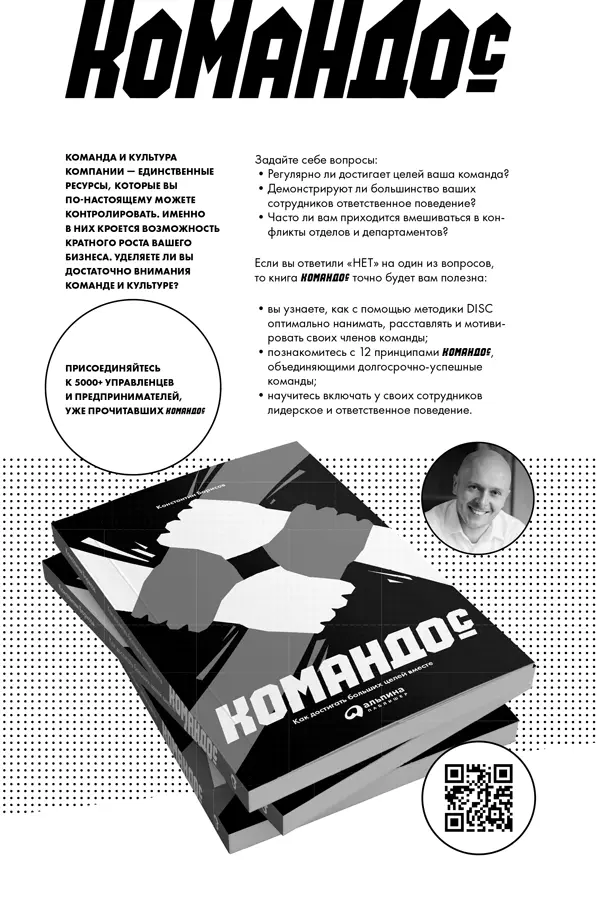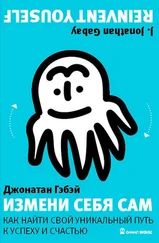Заодно я пришлю вам описание первой стадии моей исправленной и дополненной программы «План побега», а также описание первой стадии моей программы «План побега для предпринимателей». Там показано, как лучше всего привести в соответствие ваши ценности и усилия, чтобы достигать своих личных и профессиональных целей и чтобы вы смогли выйти на высшие уровни осознанного достижения . В качестве еще одного бонуса я вышлю вам все исходные материалы, учебные примеры и упражнения, которые легли в основу этой книги.
Желаю успеха – Исайя

Schwartz, T. and McCarthy, C. (2007). ‘Manage your energy, not your time’. Harvard Business Review . https://hbr.org/2007/10/manage-your-energy-not-your-time.
Omahen, D. (2009). ‘The 10 000-hour rule and residency training’. Canadian Medical Association Journal , 180 (1–2): 1272. https://www.ncbi.nlm.nih.gov/pmc/articles/pmc2691450/#b1–1801272.
Sasai, T. et al. (2012). ‘Impaired decision-making in idiopathic REM sleep behavior disorder’. Sleep Medicine . 13 (3): 301–6. https://www.ncbi.nlm.nih.gov/pubmed/22285107.
Ericsson, K. et al. (1993). ‘The role of deliberate practice in the acquisition of expert performance’. Psychological Review , 100 (3): 363–406. http://psycnet.apa.org/index.cfm?fa=buy.optionToBuy&id=1993–40718–001.
Mueller, et al. (2010). ‘The bias against creativity’. http://digitalcommons.ilr.cornell.edu/cgi/viewcontent.cgi?article=1457&context=articles.
Hill, A. (2010). ‘Emotions as infectious diseases in a large social network: the SISa model’. Proceedings of the Royal Society . http://rspb.royalsocietypublishing.org/content/277/1701/3827.short.
Hassin, R. R. et al. (2004). ‘Goal contagion: Perceiving is for pursuing’. Journal of Personality and Social Psychology , 87 (1): 23–37.
Rose, J. D. (2011). ‘Diverse perspectives on the groupthink theory – A literary review’. Emerging Leadership Journeys , 4 (1): 37–57. http://www.regent.edu/acad/global/publications/elj/vol4iss1/Rose_V4I1_pp37–57.pdf.
Vaish, A. (2013). ‘Not all emotions are created equal: The negativity bias in social-emotional development’. Psychology Bulletin , 134 (3): 383–403. https://www.ncbi.nlm.nih.gov/pmc/articles/PMC3652533.
Chartrand, T. L. and Bargh, J. A. (1999). ‘The chameleon effect: the perception-behavior link and social interaction’. Journal of Personality and Social Psychology , 76 (6): 893–910. https://www.ncbi.nlm.nih.gov/pubmed/10402679.
University of California, San Diego (2014). ‘Lied-to children more likely to cheat, lie’. ScienceDaily . https://www.sciencedaily.com/releases/2014/03/140319093802.htm.
Christikis, N. A. and Fowler, J. H. (2007). ‘The spread of obesity in a large social network over 32 years’. New England Journal of Medicine , 357 (4): 370–379. https://www.ncbi.nlm.nih.gov/pubmed/17652652.
Rezaeetalab, F. (2012). ‘The effect of smoking by family members and friends on the incidence of smoking among high school students’. Pneumologia . 61(4): 234–236. https://www.ncbi.nlm.nih.gov/pubmed/23424948.
Schwartz, M. (2007). ‘Robert Sapolsky discusses physiological effects of stress’. Stanford News . http://news.stanford.edu/news/2007/march7/sapolskysr-030707.html.
Sommer, K. and Juran, Y. (2013). ‘Ostracism as resource conservation during aversive interactions’. Journal of Social and Personal Relationships . http://journals.sagepub.com/doi/abs/10.1177/0265407512473006?rss=1&.
Stechyson, N. (2012). ‘Sense of obligation to employer causes burnout: study says’. Canada.com. http://www.canada.com/Sense+obligation+employer+causes+burnout+study/6410674/story.html.
APA (2014). ‘Sense of obligation leads to trusting strangers, study says’. http://www.apa.org/news/press/releases/2014/05/trusting-strangers.aspx.
Hastings, M. (2002). ‘Shame, guilt, and suicide’. Suicide Science . pp. 67‒79. https://link.springer.com/chapter/10.1007/0-306-47233-3_6.
Hill, A. et al. (2010). ‘Emotions as infectious diseases in a large social network: he SISa model’. Royal Society Publishing . http://rspb.royalsocietypublishing.org/content/277/1701/3827.short.
Keim, B. (2014). ‘Happiness and sadness spread just like disease’. Wired . https://www.wired.com/2010/07/contagious-emotions.
Reuters (2014). ‘Stressful relationships may lead to early death’. NY Daily News . http://www.nydailynews.com/life-style/health/stressful-relationships-lead-earlier-death-article-1.1806075.
Doheny, K. (2007). ‘Bad marriage, bad heart?: Negative relationships boost heart disease risk by 34 %, study shows’. WebMD.
Zetlin, M. ‘Listening to complainers is bad for your brain’. https://www.inc.com/minda-zetlin/listening-to-complainers-is-bad-for-your-brain.html.
UNIS (2014). ‘In fear of your boss? New UNSW research shows you’ll be far less creative’. http://www.unisaustralia.com/category/business-economics-law-news.
APA (2007). ‘Someone to complain with isn’t necessarily a good thing, especially for teenage girls’. http://www.apa.org/news/press/releases/2007/07/co-rumination.aspx.
Ross, R. (2012). ‘Study: People who watch reality TV have lower self-esteem’. http://www.tvguide.com/news/reality-tv-study-1057707.
Sommer, K. and Juran, Y. (2013). ‘Ostracism as resource conservation during aversive interactions’. Journal of Social and Personal Relationships . http://journals.sagepub.com/doi/abs/10.1177/0265407512473006?rss=1&.
Neergaard, L. (2011). ‘Study finds negativity tied to physical pain’. http://www.sj-r.com/x1274021981/Study-finds-negativity-tied-to-physical-pain?Start=1.
O’Brien, E.M. (2010). ‘Negative mood mediates the effect of poor sleep on pain among chronic pain patients’. Clinical Journal of Pain , 26 (4): 310–319. https://www.ncbi.nlm.nih.gov/pubmed/20393266.
Johannes, C. E. et al. (2015). ‘Psychological language on twitter predicts county-level heart disease mortality’. Psychological Science . http://journals.sagepub.com/doi/abs/10.1177/0956797614557867.
Читать дальше
![Исайя Хенкель Наука успеха [Как фокусироваться на важном и найти свой уникальный путь] [litres] обложка книги](/books/406569/isajya-henkel-nauka-uspeha-kak-fokusirovatsya-na-cover.webp)


![Грегори Робертс - Духовный путь [litres]](/books/385614/gregori-roberts-duhovnyj-put-litres-thumb.webp)
![Фрэнк Мартела - Wonderful Life. Размышления о том, как найти смысл жизни [litres]](/books/390695/frenk-martela-wonderful-life-razmyshleniya-o-tom-k-thumb.webp)
![Кэрри Лонсдейл - Новый путь [litres]](/books/391049/kerri-lonsdejl-novyj-put-litres-thumb.webp)
![Анна Мохова - Ты не одна [Как забыть одиночество и найти счастье внутри себя] [litres]](/books/395417/anna-mohova-ty-ne-odna-kak-zabyt-odinochestvo-i-n-thumb.webp)
![Джошуа Кертисс - Не позволяйте тревоге рулить вашей жизнью [Наука управления эмоциями. Наука управления эмоциями и осознанность для преодоления страха и беспокойства] [litres]](/books/412454/dzhoshua-kertiss-ne-pozvolyajte-trevoge-rulit-vashej-thumb.webp)
![Анна Одувалова - Как найти королеву Академии? [litres]](/books/413718/anna-oduvalova-kak-najti-korolevu-akademii-litre-thumb.webp)
![Ирина Котова - Королевская кровь. Огненный путь [litres]](/books/427447/irina-kotova-korolevskaya-krov-ognennyj-put-lit-thumb.webp)
![Джон Эспозито - Последний путь [litres]](/books/430069/dzhon-espozito-poslednij-put-litres-thumb.webp)
![Игорь Шелег - Тернистый путь [litres]](/books/433315/igor-sheleg-ternistyj-put-litres-thumb.webp)

